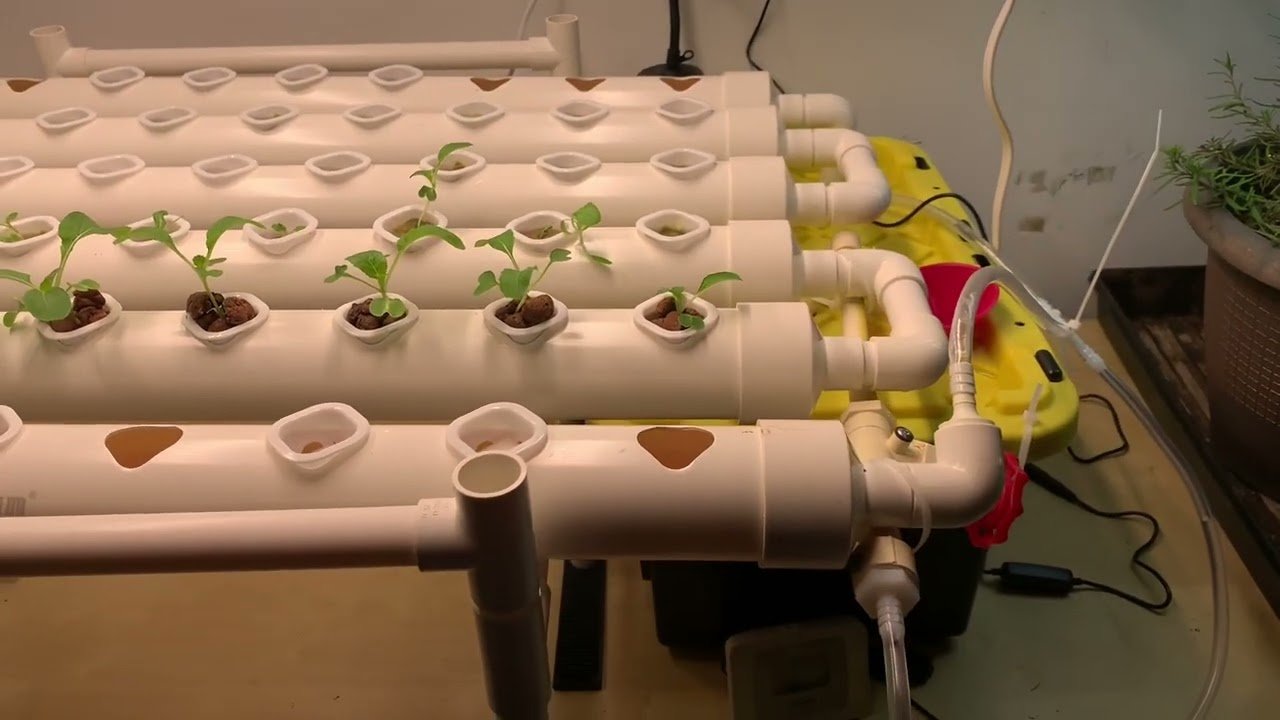My Humbling Journey into Hydroponics (and the Fish That Didn’t Make It)
Growing up in a small town in the Midwest, my backyard was often an extension of my imagination. I spent many afternoons tinkering away, fabricating toys from random scraps or trying to concoct the perfect treehouse—neither of which ever fully came to fruition, of course. So, when the idea of creating a DIY hydroponics system crossed my mind, I was on it like white on rice.
Now, let me clarify—I didn’t jump into this thing blindly. I’d spent my fair share of hours on YouTube and scouring gardening forums late at night, half-excited and half-confused. Everyone was talking about how easy it was to grow delicious, fresh veggies in your own home without soil. The whole “no dirt” business sounded like a science fiction novel waiting to unfold right in my backyard.
The Blueprint and the Bumps
I began the process in my decrepit shed, which smelled like a combination of musty old wood and forgotten fishing gear. I scavenged around and pulled out what I could find—an old plastic kiddie pool, some leftover PVC pipes, and even an air pump from my son’s former fish tank. My plan? An aquaponics system where fish would help feed the plants, and the plants would filter the water for the fish. Sounded genius, right? Spoiler alert: It wasn’t.
I decided to go with goldfish—cheap, hardy, and honestly, they looked cute swimming around in my little aluminum mixing tub. What I didn’t predict was how naïve I was about fish care. I mean, in my mind, fish were practically robots: they needed air and food, right? How complicated could it be? So there I was, tossing in fish flakes like confetti.
Water Woes and Crazy Smells
Fast forward a week. I thought I’d nailed it—my plants were sprouting heroically out of the PVC pipes, and the fish seemed to be relatively happy, swimming in circles. But then I noticed the water taking on a greenish hue. It dawned on me—I might’ve overlooked the whole “nitrogen cycle” concept. Suddenly, my backyard venture was starting to smell like a low-budget aquarium gone wrong. That beautiful pool of water looked more like a murky swamp, and the fish started acting strangely, kinda like they were auditioning for the role of "drowning."
With the smell wafting through my yard, my family began eyeing my venture with skeptical glances. My son even joked that he would find it in his heart to save the fish if I didn’t get my act together. As I stared into that murky mess, I almost gave up. The thoughts raced through my mind: “Maybe I’m not cut out for this.” But then again, did I really want to be defeated by a bunch of gills?
A Fork in the Road
After a few sleepless nights and questionable Googling, I decided to make a change. I grabbed some testing strips from an aquarium supplies store—yes, I embarrassed myself in front of the cashier by asking for the "good vibes" kind. Armed with newfound knowledge (and a brooding sense of determination), I realized I had to cycle the water, keep it aerated, and monitor, monitor, monitor!
One night, as I sat outside listening to the crickets, with my head filled with information, I nearly jumped off my chair when I realized my air pump had sputtered to a halt. There were times I felt like a mad scientist; I was inches away from tempers flaring and water sloshing as I tried to reconnect wires and make sure the pump hum was back in action. That moment was pure chaotic bliss—nothing quite like the thrill of macgyvering your way to a solution.
Grief and Growth
But then… disaster struck. I woke up one morning, groggy-eyed, and checked the fish tank only to find that some of my goldfish had passed. Watching a floating fish is like witnessing a tiny tragedy you‘re powerless to change. I learned my lessons the hard way, but I didn’t let that discourage me completely. I mourned my aquatic heroes but vowed to adapt and evolve.
After replacing my fish with fresher ones (thank you, local pet shop), I decided it was time to set my sights on growing herbs. It made sense—the more resilient the plant, the better chance I had at this whole hydroponics thing. Basil, mint, and some scrappy little tomatoes became my new garden companions. I stumbled upon the idea that maybe this was more like an art than a “set it and forget it” project. Challenges became paths to new ideas.
The Sweet Reward
Eventually, after all the hiccups, mistakes, and near-breakdowns, I found some semblance of balance. My plants thrived and grew lush and green, filling my backyard with fragrance and delight. I even managed to whip up a few simple dishes featuring fresh basil and tomatoes. I’ll admit, seeing my family take a bite of a salad with home-grown ingredients felt kind of like holding the trophy at the end of a long marathon. The effort was worth it, and it wasn’t so much about the goldfish or even the herbs at that point; it was about the journey that made our evenings around the dinner table more meaningful.
Takeaway
So here’s my takeaway: if you’re thinking about diving into hydroponics—or really, any DIY project—don’t worry about getting it perfect. You’ll make mistakes, have fish die, and learn along the way. Just start! Hopefully, you’ll grow something you’re proud of. But even if you don’t, the adventure itself adds richness to your life. Dive in, mess around, and let those little victories sink in.
And if you’re interested in learning more, I’d love for you to join me in this wild ride. Join the next session and let’s grow together!
Reserve your seat here!







Leave a Reply